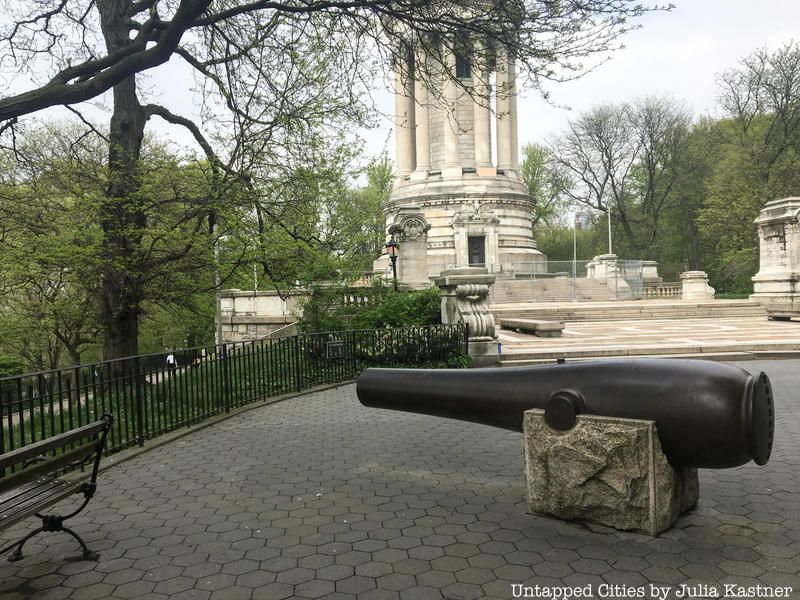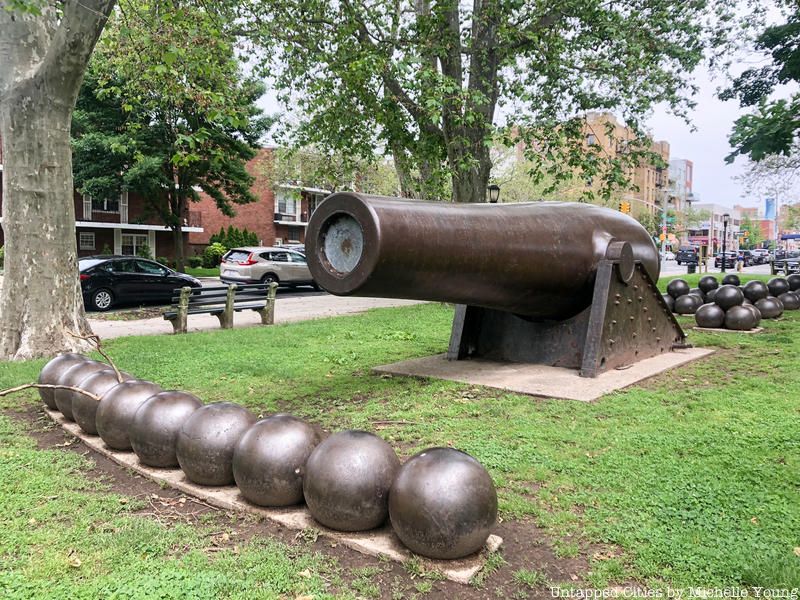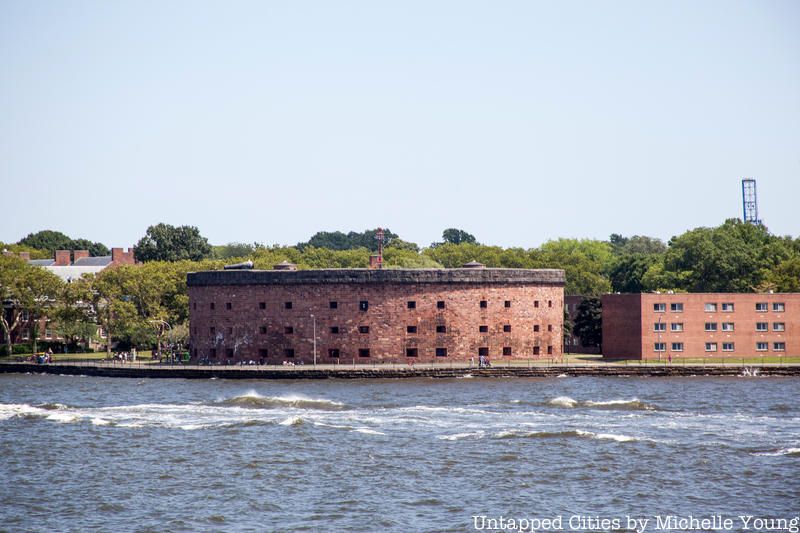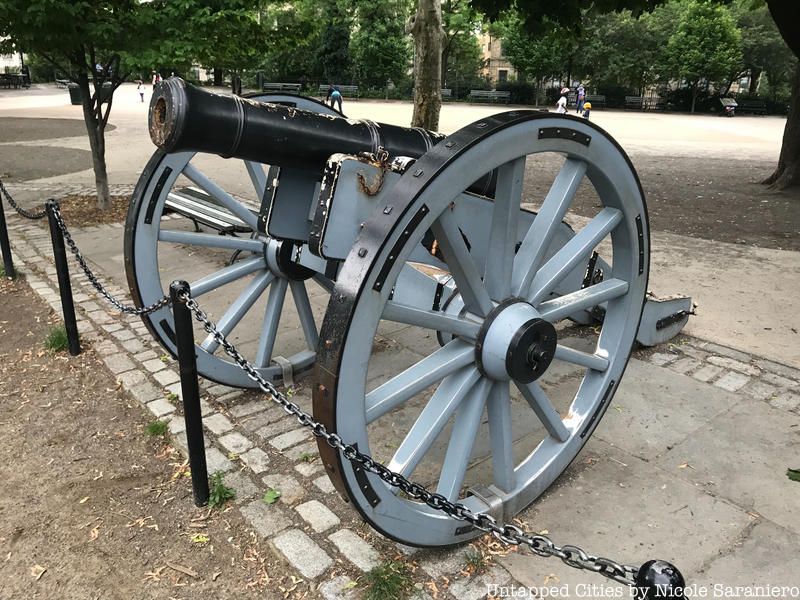Last Chance to Catch NYC's Holiday Notalgia Train
We met the voices of the NYC subway on our nostalgia ride this weekend!


From the Battle of Brooklyn in 1776 to the Draft Riots of 1863, a number of significant battles have taken place in New York City that directly played a role in the founding of the United States, and ultimately shaping the direction of the country. Although plenty of that history has been lost to time, replaced with skyscrapers and paved roads, historic remnants can still be found hidden in plain sight.
Below are five cannons associated with different wars that all tell the astounding history of New York City:
In 1780, the Revolutionary Era cannon was recovered from the sunken British warship, the HMS Hussar. It was given to Central Park as a gift from an anonymous donor in 1865, and stored in the Ramble shed near the 79th Street traverse, along with another Revolutionary War-era cannon.
After being moved to various places around the park, it was eventually installed at Fort Clinton in 1905. There, it remained on public display until 1996 when the Central Park Conservancy decided to bring it indoors to protect it from vandalism. In 2013, however, workers from the Central Park Conservancy, while trying to refurbish and clean the cannon, found it to be still active — fully loaded with 800 grams of live gunpowder, cotton wadding and a cannon ball.
The gun powder has since been removed, and the cannon is now reinstalled in Fort Clinton, at 107th Street, close to 5th Avenue.

The Riverside Civil War cannons are a part of the Soldiers’ and Sailors’ Monument, located on 89th Street and Riverside Drive inside Riverside Park. South of the monument are three mounted bronze cannons, which were cast in 1865. There’s not much information on the cannons: a blogger that runs the New York City Civil War Monument Database notes that it’s difficult to know where they were placed or if they were even used. However, based on the shape of the gun and the year it was made, it’s probable that they are 8-inch Dahlgren naval guns, which were used extensively by the Union Navy during the Civil War.
The Soldiers’ and Sailors’ Monument itself was built in memoriam to the Union sailors and soldiers who fought in the Civil War. Completed in 1902 and designed by Arthur and Charles Stoughton, it stands at 96-feet high and is made of marble and granite.

Located at Fourth Avenue and 101st Street in Brooklyn, the Fort Hamilton Rodman Gun is housed in John Paul Jones Park, named after the “father of the navy,” Revolutionary War hero, John Paul Jones.
The 116,000 pound, 20-inch bore columbiad was created by artilleryman Thomas Jackson Rodman in 1864, and designed for Civil War use. Although it was tested at Fort Hamilton, the neighboring army base, it was proved to be unsuitable, and was given to the park by the United States Military in 1900.
Today, the gun is surrounded by cannon balls and takes up a significant part of the landscape.

Located on the west point of Governors Island, Castle Williams is a circular defensive structure, named after its designer, Lieutenant Colonel Jonathan Williams. Castle Williams’ cannons were never used to fire against an enemy; they were used instead for ceremonial purposes.
Built on a rocky outcropping facing New York harbor in 1811, Castle Williams was served as a center of fortification during the War of 1812. Along with Fort Jay and South Battery on the island, it made up the inner harbor of a larger defense system called the Second American System of coastal defense, which protected American shipping from British interference.
Castle Williams was individually listed on the National Register of Historic Places on July 31, 1972. The castle is also located along the boundaries of Governors Island National Monument, created by Presidential Proclamations signed in 2001 and 2003.

In 2012, the renovation of Washington Heights‘ Bennett Park was completed, which included a replica of a Revolutionary War-era, double tail-six pound English field cannon that was used at Fort Washington.
Bennett Park is named after James Gordon Bennett Sr., a prominent newspaper publisher who bought the land where Fort Washington was located in 1871; its high altitude at 265.5 feet above sea level made it a strategic lookout point for General George Washington. Fort Washington was built in 1776, and was the last American-controlled fort before being seized by British and Hessian forces that November. While the fort was short lived, the replica of the cannon still stands today as a “symbolic artifact” of the site’s historic origins.
Next, check out 10 Traces of World War I You Can Still Find in NYC and read about the Revolutionary War Sugar House Prison Window in Downtown Manhattan.
Subscribe to our newsletter